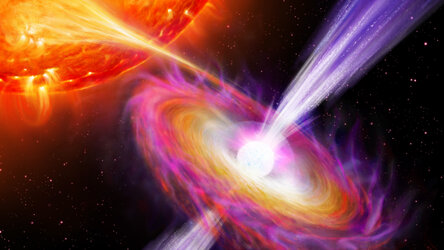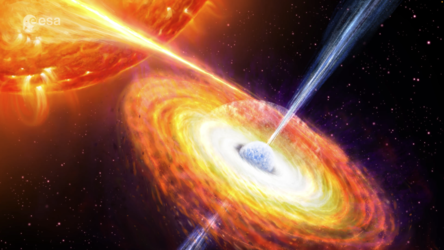Accept all cookies Accept only essential cookies See our Cookie Notice

About ESA
The European Space Agency (ESA) is Europe’s gateway to space. Its mission is to shape the development of Europe’s space capability and ensure that investment in space continues to deliver benefits to the citizens of Europe and the world.
Highlights
ESA - United space in Europe
This is ESA ESA facts Member States & Cooperating States Funding Director General Top management For Member State Delegations European vision European Space Policy ESA & EU Space Councils Responsibility & Sustainability Annual Report Calendar of meetings Corporate newsEstablishments & sites
ESA Headquarters ESA ESTEC ESA ESOC ESA ESRIN ESA EAC ESA ESAC Europe's Spaceport ESA ESEC ESA ECSAT Brussels Office Washington OfficeWorking with ESA
Business with ESA ESA Commercialisation Gateway Law at ESA Careers Cyber resilience at ESA IT at ESA Newsroom Partnerships Merchandising Licence Education Open Space Innovation Platform Integrity and Reporting Administrative Tribunal Health and SafetyMore about ESA
History ESA Historical Archives Exhibitions Publications Art & Culture ESA Merchandise Kids Diversity ESA Brand Centre ESA ChampionsLatest
Space in Member States
Find out more about space activities in our 23 Member States, and understand how ESA works together with their national agencies, institutions and organisations.
Science & Exploration
Exploring our Solar System and unlocking the secrets of the Universe
Go to topicAstronauts
Missions
Juice Euclid Webb Solar Orbiter BepiColombo Gaia ExoMars Cheops Exoplanet missions More missionsActivities
International Space Station Orion service module Gateway Concordia Caves & Pangaea BenefitsLatest
Space Safety
Protecting life and infrastructure on Earth and in orbit
Go to topicAsteroids
Asteroids and Planetary Defence Asteroid danger explained Flyeye telescope: asteroid detection Hera mission: asteroid deflection Near-Earth Object Coordination CentreSpace junk
About space debris Space debris by the numbers Space Environment Report In space refuelling, refurbishing and removingSafety from space
Clean Space ecodesign Zero Debris Technologies Space for Earth Supporting Sustainable DevelopmentLatest
Applications
Using space to benefit citizens and meet future challenges on Earth
Go to topicObserving the Earth
Observing the Earth Future EO Copernicus Meteorology Space for our climate Satellite missionsCommercialisation
ESA Commercialisation Gateway Open Space Innovation Platform Business Incubation ESA Space SolutionsLatest
Enabling & Support
Making space accessible and developing the technologies for the future
Go to topicBuilding missions
Space Engineering and Technology Test centre Laboratories Concurrent Design Facility Preparing for the future Shaping the Future Discovery and Preparation Advanced Concepts TeamSpace transportation
Space Transportation Ariane Vega Space Rider Future space transportation Boost! Europe's Spaceport Launches from Europe's Spaceport from 2012Latest

A neutron star
Thank you for liking
You have already liked this page, you can only like it once!
Neutron stars are some of the densest objects in the Universe. The material inside gets squeezed so hard that scientists don't yet know what form it takes. The core of a neutron star might be made of a thick soup of quarks, or contain exotic particles that couldn't survive anywhere else in the Universe.
Since we can't directly look inside a neutron star, and we can't recreate one on Earth, scientists have been comparing many different possible models – called 'equations of state' – to measurements of neutron stars taken from afar. While the behaviour of individual neutron stars may depend on properties like their mass or how fast they spin, all neutron stars must obey the same equation of state.
The discovery of three remarkably young and cold neutron stars shows that they are capable of cooling down rapidly. They did this by sending out trillions of tiny particles called neutrinos via the so-called 'direct Urca process'. As much as three quarters of known neutron state models don't incorporate this cooling mechanism, so this finding brings us a big step closer to uncovering the one equation of state to rule them all!
Click here to read the full story
[Image description: An artist impression of a neutron star, shown as a bright blue and red sphere with spark-like features flying off it. Several blue magnetic field lines loop connect the sphere's two poles. The sphere is surrounded by a see-through blue cloud, and with a red cloud on the sides of the image. Stars are visible in the background.]
-
CREDIT
ICE-CSIC/D. Futselaar/Marino et al. -
LICENCE
No ESA licences available

Quick-cooling oddballs rewrite neutron star physics

Neutron Star/Quark Star Interior

Nuclear explosions on a neutron star feed its jets

Artist's impression of a neutron star partially devo…















 Germany
Germany
 Austria
Austria
 Belgium
Belgium
 Denmark
Denmark
 Spain
Spain
 Estonia
Estonia
 Finland
Finland
 France
France
 Greece
Greece
 Hungary
Hungary
 Ireland
Ireland
 Italy
Italy
 Luxembourg
Luxembourg
 Norway
Norway
 The Netherlands
The Netherlands
 Poland
Poland
 Portugal
Portugal
 Czechia
Czechia
 Romania
Romania
 United Kingdom
United Kingdom
 Slovenia
Slovenia
 Sweden
Sweden
 Switzerland
Switzerland
























